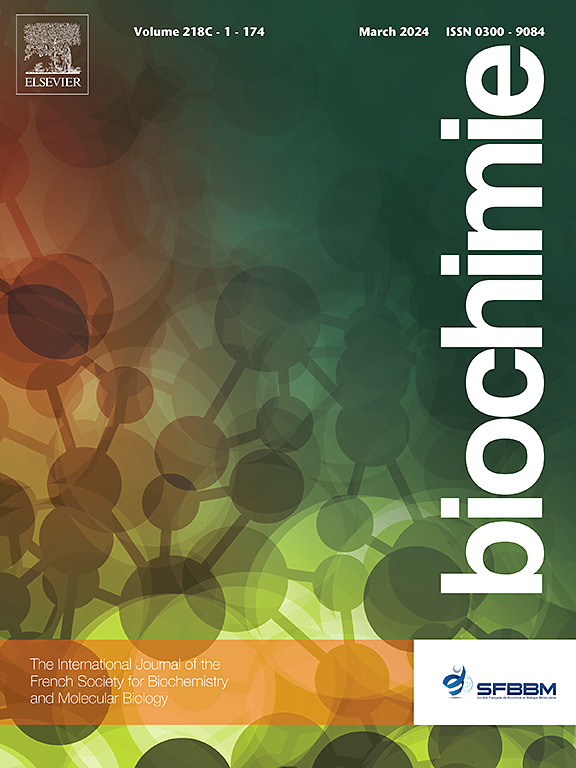Assessment of venom variation and phylogenetic relationships of Micrurus dumerilii from three different regions of Colombia
IF 3.3
3区 生物学
Q2 BIOCHEMISTRY & MOLECULAR BIOLOGY
引用次数: 0
Abstract
In the Americas, the genus Micrurus (coral snakes) includes the highest number of snake species, and Colombia is the second country with the greatest species diversity. Micrurus dumerilii has wide distribution and clinical importance in the country. The variability of its venom has not been extensively studied, and this could have implications for the neutralization by antivenoms. In this study, we explored the phylogenetic relationships between specimens from three regions of Colombia (Antioquia, Chocó, and Santander) and the variation in their venoms using proteomics, in vitro and in vivo assays, and assessment of antigenic recognition by the anticoral-INS antivenom. Phylogenetic analyses using nd4, Cyt b, and 16S rRNA gene fragments showed a close relationship between M. dumerilii from Ecuador and Chocó (Colombia), and within the M. dumerilii clade, a particularly close relationship between specimens from Antioquia and Santander. The venoms of M. dumerilii showed high overall similarity in their chromatographic profiles, with peaks corresponding to the three-finger toxin (3FTx) and phospholipase A2 (PLA2) protein families being predominant. Some differences were observed in the number of protein families identified in each venom, but the main fraction responsible for lethality in the venoms from Antioquia, Chocó, and Santander was preserved. The commercial antivenom available in Colombia recognizes venom from all three regions. These general antigenic similarities between samples suggest that it may not be necessary to include M. dumerilii venoms from different geographic areas as immunogens for the production of antivenom against this species.
哥伦比亚3个不同地区小圆尾鼠毒液变异及系统发育关系的评估。
在美洲,珊瑚蛇属(Micrurus)包含的蛇种类最多,哥伦比亚是物种多样性第二高的国家。小檗在国内分布广泛,具有重要的临床意义。其毒液的可变性尚未得到广泛研究,这可能对抗蛇毒血清的中和作用有影响。在这项研究中,我们利用蛋白质组学、体外和体内实验以及抗珊瑚- ins抗蛇毒血清的抗原识别评估,探讨了来自哥伦比亚三个地区(安蒂奥奎亚、Chocó和桑坦德)的标本之间的系统发育关系及其毒液的变异。利用nd4、Cyt b和16S rRNA基因片段进行的系统发育分析显示,厄瓜多尔和Chocó(哥伦比亚)的M. dumerilii亲缘关系密切,在M. dumerilii分支中,来自安蒂奥奎亚和桑坦德的M. dumerilii标本之间的亲缘关系尤为密切。dumerilii毒液在色谱图谱上具有较高的整体相似性,其峰主要对应于三指毒素(3FTx)和磷脂酶A2 (PLA2)蛋白家族。在每种毒液中发现的蛋白质家族数量存在一些差异,但在Antioquia, Chocó和Santander毒液中负责致命的主要部分被保存下来。哥伦比亚的商业抗蛇毒血清可以识别来自这三个地区的蛇毒。这些样本之间的一般抗原相似性表明,在生产针对该物种的抗蛇毒血清时,可能没有必要将来自不同地理区域的dumerilii毒液作为免疫原。
本文章由计算机程序翻译,如有差异,请以英文原文为准。
求助全文
约1分钟内获得全文
求助全文
来源期刊

Biochimie
生物-生化与分子生物学
CiteScore
7.20
自引率
2.60%
发文量
219
审稿时长
40 days
期刊介绍:
Biochimie publishes original research articles, short communications, review articles, graphical reviews, mini-reviews, and hypotheses in the broad areas of biology, including biochemistry, enzymology, molecular and cell biology, metabolic regulation, genetics, immunology, microbiology, structural biology, genomics, proteomics, and molecular mechanisms of disease. Biochimie publishes exclusively in English.
Articles are subject to peer review, and must satisfy the requirements of originality, high scientific integrity and general interest to a broad range of readers. Submissions that are judged to be of sound scientific and technical quality but do not fully satisfy the requirements for publication in Biochimie may benefit from a transfer service to a more suitable journal within the same subject area.
 求助内容:
求助内容: 应助结果提醒方式:
应助结果提醒方式:


